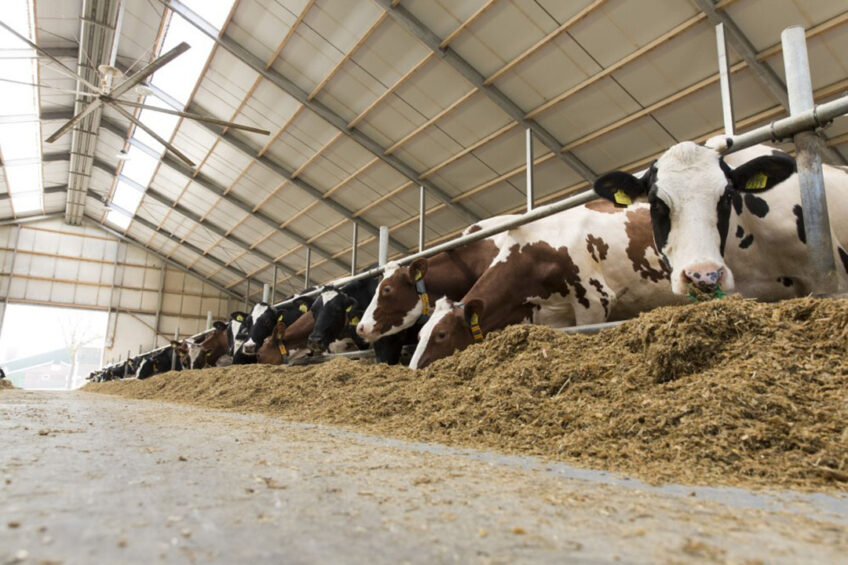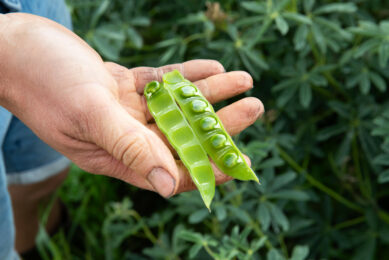Adding nutrients as ‘little bombs’ in dairy cow feed

To remain profitable, producers must make decisions based on their herd’s income over feed costs. Adding ‘little bombs’ high in the specified nutrients, such as rumen inert/bypass proteins and fatty acids, will help meet the cow requirements.
Dairy rations consist of 2 basic components: home-raised and purchased feeds. These can be further divided into forages (hay, corn silage, and hay-crop forage), concentrates (cereal grains, protein sources, minerals, and vitamins), and by-products (distiller’s grains, soy hulls, and whole cottonseed).
Dairy cow feed costs have typically represented a large percentage of the total cost of producing milk and can range between 30 and 70% of the milk income. The recent increases in feed costs mean many dairy producers will be looking to extend grazing periods and make more use of forage this summer.
Profitable milk production
To remain profitable, producers must make decisions based on their herd’s income over feed costs. This enables producers to make more informed decisions about feed purchases, when to lock in milk or feed prices, or adjust the ration programme to accommodate market uncertainty. Additionally, with high production costs putting extreme pressure on margins, the temptation is to consider ways to reduce feed costs. But producers are reminded it is vital that grazing is measured and managed, so it can be balanced with the correct buffer feeding to maximise dry matter intake and margins.
“Rather than thinking ‘what can I save if I cut something out of the ration?’ consider what returns you will get if you spend a little more, or indeed, what do you risk losing if you cut something out…”
World per capita consumption of fresh dairy products is projected to increase by 1% p.a. over the coming decade, slightly faster than over the past 10 years.
“Rather than thinking ‘what can I save if I cut something out of the ration?’ consider what returns you will get if you spend a little more, or indeed, what do you risk losing if you cut something out,” says UFAC-UK ruminant technical manager, Mike Chown. “Don’t over-estimate the nutritional supply from grazing alone. While purchased feed prices continue to rise, so too have milk prices.”
It is important that every purchased feed is most cost-effective for the nutrient it is contributing to, for example, not just looking at crude protein, but also looking at the cost of rumen degradable and rumen undegradable protein such as amino acids.
Adding ‘little bombs’ of nutrients
Chown states that adding ‘little bombs’ high in the specified nutrients, such as rumen inert/bypass proteins and fatty acids, will help meet the cow requirements. Forage rations are typically low in these. They should be added as soon as buffer feeding is required. Typically, for forage requirements, look between 28 and 32% dry matter intake, ideally over 11 metabolizable energy, with neutral detergent fibre in the low 40s. If on a total mixed ration, these figures could be very different. Also keep in mind a cow’s requirements vary through lactation.
To maximise forage dry matter intake, Chown recommends analysing all forages at least once per month. “Balance them with the correct nutrients, such as structural fibre, sugar, starch, rumen protein, by-pass protein and rumen inert fatty acids,” explains Chown. “Suitable adjustments and additions to dairy diets can have a big impact on performance, health and fertility, and therefore margins.”
Generally, there is minimal need to replace pasture with another feed during the spring/summer while cows are grazing pastures, other than supplementing cows with salt and minerals/vitamins. In most cases, the nutrient quality of warm-season pastures is high enough to meet the energy and protein needs of lactating cows. Many combinations of feeds can be used to develop balanced rations. The ideal approach to calculate daily feed costs per lactating cow is using the batch feed weights, the number of cows fed, and their respective prices.
For more info: www.ufacuk.com
Join 13,000+ subscribers
Subscribe to our newsletter to stay updated about all the need-to-know content in the dairy sector, two times a week.










